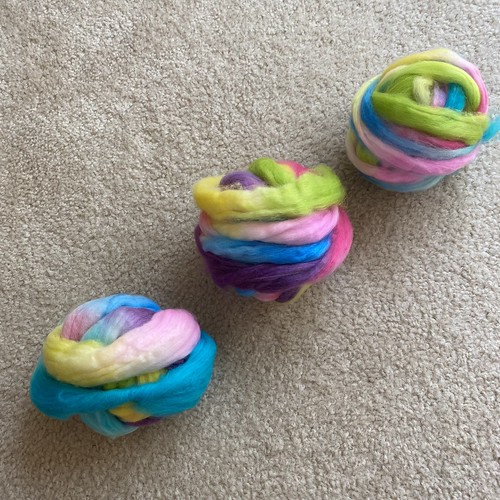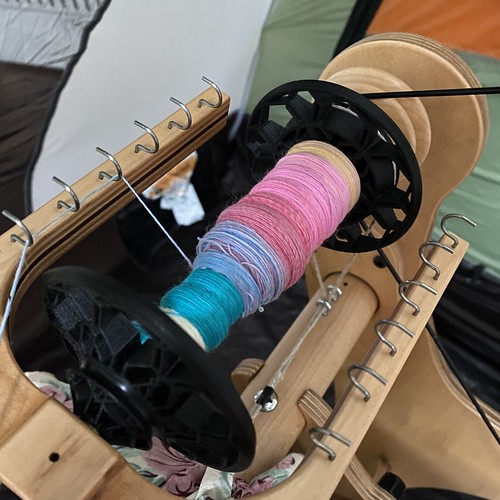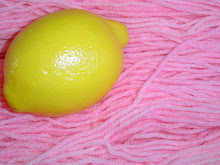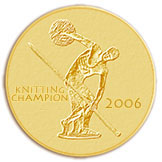A New Spinning Project And Some Thoughts On Color
I started a new spinning project, but this is a smaller one than the last one was! I like to alternate the size of spinning projects so I don't feel bogged down in one massive project after another. Anyway, I realized recently that I had never spun superwash merino (or superwash anything). I knit the yarn all the time, in various weights, but had never spun the fiber. I decided it was time. I picked up a braid of Sweet Voices dyed by Three Waters Farm that's 75% Superwash Merino and 25% Nylon, and I decided to spin a three ply fingering weight yarn for socks. (I have no idea what the colorway name means to the dyer, it looks like Easter eggs to me.)
There's a lot going on colorwise with this fiber and while I could just spin it (either leaving the braid intact or splitting it lengthwise a few times) and then chain ply it, my colors would stay intact, but my finished yarn would stripe (longer stripes if I were to leave the braid intact and shorter stripes if I split it). I'm not wanting stripes for this project though. I really want the colors to all play together in the finished yarn so I could have just split the fiber into thirds and let it do whatever it wants, then ply the thirds together. With that method of color handling, you run the risk of the whole thing turning to mud or at least getting some muddy sections, particularly with a colorway that goes all the way around the color wheel. (If it was an analogous colorway, hues next to each other on the color wheel, the risk of mud would be minimal to non existent.)
Instead I decided to spin this another way. First I divided the length of fiber into thirds by weight. I didn't try to keep the stripe sequence intact, I just weighed and divided at this point. The first bobbin is being spun from the first third of the fiber and I haven't done any further fiber prep. I'm spinning straight through with one long section of color after another. The second section of fiber I split into fourths lengthwise. The color sections on this bobbin will be shorter than those on the first bobbin. The third and final section of fiber was split into eighths lengthwise, so the color sections will be very short in this singles. Above, you can see the the three sections of fiber starting with section 1 in the lower left corner. You can see the difference in fiber width in each nest of fiber.
Here is the beginning of the first bobbin and you can see the large chunks of color on the singles. Once I have all three bobbins of singles spun and ply them together, it's this first bobbin that will visually anchor the finished yarn. Our eyes look for order and pattern and whatever is going on colorwise in the singles on bobbins two and three, bobbin one will be making long sections of a single color. This should help to unify the shorter lengths of color from the other two bobbins and give me a fun color party on my yarn.
At least that's how it works in my head. We'll have to see what actually happens, but that's the fun of spinning!
Finally, I just wanted to mention that while the way I stripped the fiber into increasingly narrow sections for each bobbin is similar to fractal spinning, I'm making no effort to keep the stripe sequence intact here, which is a big part of fractal spinning. So, I'm not actually doing fractal spinning. I didn't want to confuse anyone with this, just in case!
Labels: spinning












0 Comments:
Post a Comment
<< Home